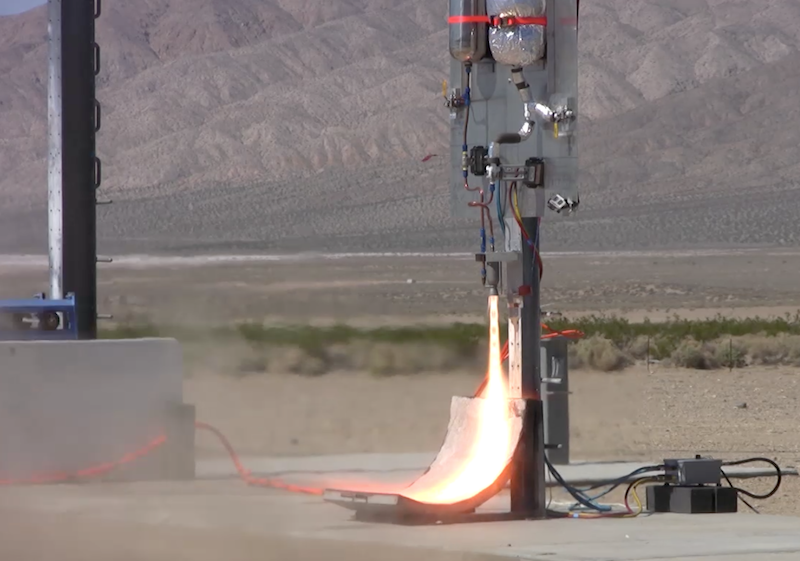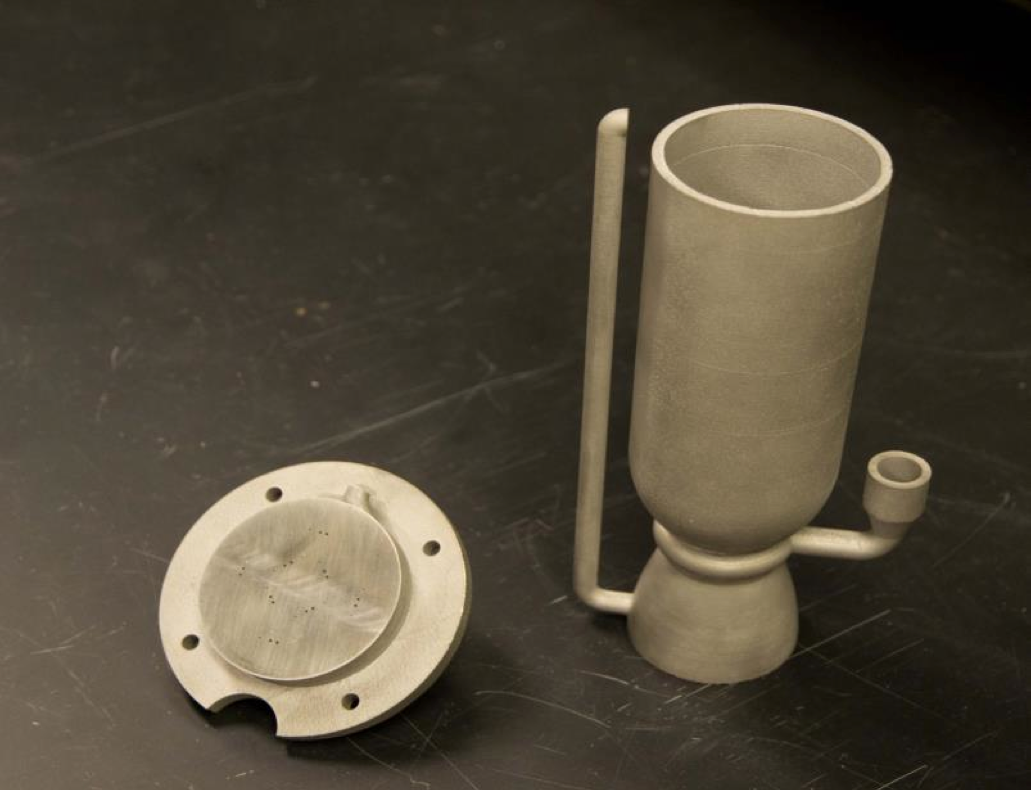3D-Printed Rocket Engine Built By Students Passes Big Test (Video)

A small 3D-printed rocket engine designed and built by a team of university students flared to life in a hot-fire test in the Mojave Desert on Saturday (Oct. 5) in a major first for additive manufacturing.
A video of the 3D-printed rocket engine test up shows it was successfully tested at the Friends of Amateur Rocketry launch site on Saturday. The feat marks the first time a university-led group has designed, printed and tested a 3D-printed rocket engine.
The rocket engine test was performed by a chapter of the Students for the Exploration and Development of Space (SEDS) at the University of California, San Diego, which spent the last eight months developing the metal rocket engine, named Tri-D. [Photos of 3D Printing In Space: A New Dimension]
Private groups and NASA have been exploring how to use additive manufacturing, or 3D printing, to cut the time, cost and design constraints of making complex rocket parts.
Tri-D was printed from cobalt chromium using a technique known as direct metal laser sintering (DMLS). The rocket engine measures just 7 inches (17 centimeters) long and it was designed to be the third stage — and smallest — of a three-stage cubesat launcher. CubeSats are miniature satellites that typically weigh no more than 3 pounds (1.3 kilograms).
The team plans to design and print the first-stage rocket engine for a cubesat launcher next and eventually build a flight-capable rocket, the student group's president, Deepak Atyam, told SPACE.com.
"We plan to conduct a hot fire test of our next engine by June of 2014 and launch the rocket by the beginning of 2015," Atyam wrote in an email. "We have a lot of work ahead of us, but we have an amazing team put together to complete the task."
Breaking space news, the latest updates on rocket launches, skywatching events and more!
Tri-D is fueled by kerosene and liquid oxygen and it is capable of 200 pounds of thrust. The total cost for manufacturing the engine and completing the test was just $6,800, the SEDS group said.
Besides the ever-present challenge of funding, Atyam said one of the biggest hurdles the group faces is the current state of 3D printer technology.
"We want to build [rockets] that are bigger and better than before, but in order to do that the technology of the metal printers has to advance as well," Atyam said. "We are pushing the limits of what these printers can do."
The students say they worked closely with NASA's Marshall Space Flight Center (MSFC) in Huntsville, Ala., to look into the feasibility of 3D-printing rocket engines. NASA researchers at MSFC recently passed a major milestone of their own; they successfully tested the largest 3D-printed rocket part built to date. In a firing test on Aug. 22, their nickel-chromium rocket injector blazed to life, generating 20,000 pounds of thrust.
Follow Megan Gannon on Twitter and Google+. Follow us @SPACEdotcom, Facebook or Google+. Originally published on SPACE.com.

Megan has been writing for Live Science and Space.com since 2012. Her interests range from archaeology to space exploration, and she has a bachelor's degree in English and art history from New York University. Megan spent two years as a reporter on the national desk at NewsCore. She has watched dinosaur auctions, witnessed rocket launches, licked ancient pottery sherds in Cyprus and flown in zero gravity on a Zero Gravity Corp. to follow students sparking weightless fires for science. Follow her on Twitter for her latest project.

